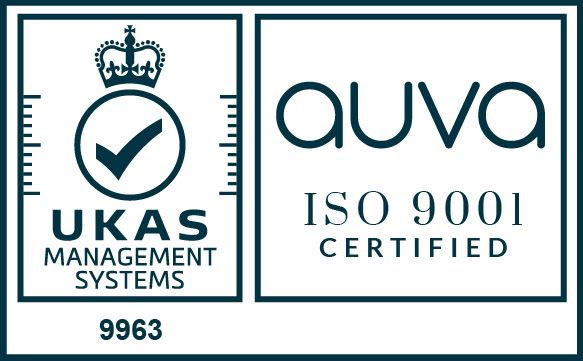Frequently Asked Questions - Resistance Temperature Detectors (RTD) including Pt100 & Pt1000 sensors
Q - What does RTD stand for?
A - RTD stands for Resistance Temperature Detector, but are also known as PRTs (Platinum Resistance Thermometers)
Q - What is an RTD?
A - A temperature sensor which contains a resistor (typically 100 or 1000 Ohms). The resistance changes with temperature; this can then be correlated to provide a temperature reading. RTDs are considered to be amongst the most accurate temperature sensors available. In addition to offering very good accuracy, they provide excellent stability, repeatability and have a high immunity to electrical noise. This means RTD Sensors are well suited for applications in process and industrial automation environments, especially around motors, generators and other high voltage equipment.
Q - What is a PRT?
A - A Platinum Resistance Thermometer (PRT) is a type of RTD that uses platinum for the sensing element. The most common PRTs are Pt100, Pt500 & Pt1000. (PRT is just a more specific name for an RTD)
Q - I need a new RTD sensor, but dont know what type I've been using, can you help?
A - The first step of identifying an RTD is finding out how many wires it has (2, 3 or 4), you can then connect the RTD to a multimeter, it should read between 107 - 110Ω at room temperature if it is a pt100. However, if it is a pt1000 you should get a reading of 1007 - 1100 Ω which confirms that it is a Pt1000.
Please note: these readings are the standard for new RTD sensors, your readings may differ if the sensor is damaged or has been continuously used
Q - What is class A or class B accuracy?
A - The international standard IEC 60751:2008 defines the resistance vs temperature characteristics for RTDs. Within this standard, to provide good interchangeability, there are accuracy standards. Class A and Class B are two of the accuracy standards. We provide a reference table for tolerances
Q - What is the difference between an RTD and a Pt100?
A - We are often asked this question, however Pt100s & Pt1000s are two types of RTDs (Pt500 is another type of RTD but is now obsolete)
Q - Will I need extension cable for my RTD sensor?
A - RTDs use electrical cable due to the fact that they detect the temperature by calculating the change of resistance in the materials, therefore you can simply order your RTD with a long lead or purchase extra cable to extend it yourself.
Q - How do I choose the correct RTD sensor for my application?
A - When choosing an RTD, you must consider the following:
• What are you measuring the temperature of (a surface or immersed in solid,liquid or gas)?
• If it is essential to have a fast response time or not, to learn the various factors of choosing a response time read more on our RTD technical page.
• The specific sizes required to fit your application e.g probe diameter, probe length, compression fittings, type of connector required etc.
• Do you require a specific sheath material?
• Do you need your sensor calibrated?
• Will the sensor need to be resistant to chemicals/abrasion/vibration or any other environmental considerations?
• Is there high emf (electromagnetic interference) potential from power switching, rectification, or radio waves?
• Any other installation considerations? (e.g does the sensor need to be bent in to shape before installation)
• Distance between the sensing area and the instrumentation
• Temperature in the sensing environment across the length of the sensor
• Connection preferences
• Current wiring configuration e.g. a 4 wire sensor won't be compatible with a 3 wire configuration
We have also developed a questionnaire designed to assist customers in choosing the RTD they require, simply fill in the PDF and return the form to sales@sterlingsensors.co.uk
If you have a question that isn't answered here, why not ask us via the contact form or
Give us a call on +44(0)161 620 0410 or email us: sales@sterlingsensors.co.uk
Q - What is the difference between a Pt100 and Pt1000?
A - If you had a Pt100 & Pt1000 submerged in water and ice measuring 0°C, the Pt100 would give a reading of 100Ω (Ohms) whilst the Pt1000 would give a reading of 1000Ω (Ohms). The most common type is Pt100 (3-wire), although Pt100 4-wire is still commonly used in labs and applications that require an accurate reading.
A simple way to think about it is that in a Pt100, 1°C is equal to 0.39Ω and in a Pt1000, 1°C is equal to 3.9Ω (100 & 1000 are simply the reference resistance of the RTDs at 0°C) . Our Mineral Insulated RTDs are rated up to 200°C so lets use that figure for our example, at 0°C the pt100 resistance will measure 100Ω (Ohms) with 0.39Ω being added for every 1°C increase.
At 0°C the pt1000 resistance will measure 1000Ω (Ohms) with 3.9Ω being added for every 1°C increase. Therefore if we compare them at 600°C you would see the Pt100 give an output of 313.59Ω whilst the Pt1000 would give an output of 3135.9Ω.
This shows us that the output for Pt1000s is extremely higher, therefore Pt100s are clearly the better choice for accurate readings as it will provide a more accurate and sensitive reading which is ideal for applications that are heated at a slow rate but require in depth measurements, whilst Pt1000s will be more suited to an application where something has a lot of heat applied at once and needs less in depth measurements (e.g rough figures such as 67°C, not 66.72°C), It is also worth noting these factors can be dependent on the wire configuration used.
Q - What is the difference between 2, 3 and 4 wire rtds?
A - 2 wire RTDs are the least accurate of the three types as there is no way of eliminating or calculating the lead wire resistance. This creates uncertainty in the reading therefore 2 wire RTDs are generally used with short lead wires where accuracy is not the main priority, they are mainly used in Pt1000 to reduce sensitivity and uncertainty (struggling to get a still reading as it is literally too accurate & the reading wont stay still) but this means it will not be providing a very precise reading compared to 3 or 4 wire.
3 wire RTDs are the most commonly used RTD sensors, Assuming all three lead wires are the same the third lead wire calculates the average lead wire resistance throughout the circuit and removes it from the sensor measurement. This makes 3-wire RTDs more accurate than the 2-wire alternative, but less accurate than 4-wire, however in circuits with long lead wires where there are long distances between the detector and the reading, significant savings can be made by using a 3-wire construction.
4-wire RTDs are used in applications where high accuracy is necessary. In a 4-wire RTD sensor the actual resistance in each of the lead wires can be measured and eliminated leaving the exact resistance of the detector. The 4-wire circuit works by using the first two lead wires to power the circuit whilst the 3rd and 4th wires read the resistance in each lead wire compensating for any differences in lead wire resistance.
Q - How far should my RTD be immersed in to the medium being measured?
A - As a rule of thumb, RTDs should be immersed 4 times the element length. (Flat film elements are typically 2-3mm, whilst wire wound elements are approximately 15mm or more) Read more about elements here.

Q - What is Mineral Insulated RTD cable? (& Why should I use it?)
A - Mineral insulated RTD cable consists of an outer metal sheath that houses the RTD conductors; the sheath is then filled with a highly compacted magnesium oxide powder to prevent the conductors contacting at any point other than the fixed junction. This construction allows the sheaths to be easily bent or formed to shape as required by the user, but remain rigid during use. The whole assembly is hermetically sealed giving the conductors full protection from the operating environment.
Mineral Insulated RTD probes are robust and can be shaped and formed to suit any application without affecting the sensor. These sensors are available in long lengths and with a broad range of diameters. They can be used at higher temperatures than fabricated RTDs
Q - What is best, RTD or Thermocouple? (RTD vs Thermocouple)
A - Both RTDs and Thermocouples have their advantages and disadvantages. The main advantages of an RTD Sensor is that they are very accurate over a wide range and combined with excellent stability, this is in comparison to a thermocouple which is less accurate, less stable and are known to drift over time. RTD Sensors are more suitable for lower temperature ranges, where higher accuracy and repeatability is required. They also need to be immersed in the media due to stem conduction errors.
We have a detailed case study giving practical advice and comparison on the difference between RTDs and thermocouples here: https://www.sterlingsensors.co.uk/rtd_vs_thermocouple
Q - What is the HS Tariff Code for a RTD sensor when importing and exporting?
A - The HS (Harmonized Sytem) code for all RTD types including Pt100 & Pt1000 is classified as 90259000.
Q - What is the difference between an RTD and a Thermistor?
A - RTDs and Thermistors are both electrical devices designed to measure temperature. The main difference in the two is the materials they are made from, Thermistors are usually made with ceramic or polymer materials, whilst RTDs are made of pure metals. RTDs can read temperatures up to 600°C but are generally used much lower to take advantage of the high accuracy. Thermistors can read temperatures up to 200°C and have faster response times than RTDs.
We have a detailed technical video giving practical advice and comparison on the difference between RTDs and Thermistors here: https://www.sterlingsensors.co.uk/thermistor#RTDs vs Thermistors
Q - What is a Pt100 Thermocouple?
A - We are often asked this question however Pt100 Thermocouples do not exist. Thermocouples are a type of sensor, and Pt100s are a type of RTD which is another sensor type.
Q - What is a Pt200 Sensor?
A - A Pt200 sensor is a type of RTD, Pt200s have a resistance of 200 Ohms (Ω) at 0ºC. Pt200 sensors are now obsolete and have been replaced by Pt100 and Pt1000 sensors. Pt500 sensors are also an obsolete type of RTD.
Q - What is a Pt500 Sensor?
A - A Pt500 sensor is a type of RTD, Pt500s have a resistance of 500 Ohms (Ω) at 0ºC. Pt500 sensors are now obsolete and have been replaced by Pt100 and Pt1000 sensors. Pt200 sensors are also an obsolete type of RTD.
Q - What in the bending radius of the PFA lead wire used on your RTD sensors
A - The bend radius for our range of PFA lead wires is
10 x Overall Diameter (Flexing)
5 x Overall Diameter (Fixed Applications)
For more information on Platinum Resistance Thermometers take a look here:-
Sterling Sensors - RTD Sensor technical reference
Sterling Sensors - RTDs vs Thermocouples
National Physics Laboratory - What is a Platinum Resistance Thermometer?
Wikipedia - All about Resistance Temperature Detectors
Temperatures - Resistance Temperature Detectors
or to discuss your requirements with our sales team, call +44(0)161 620 0410 or Email sales@sterlingsensors.co.uk
If you have a question that isn't answered here, why not ask us via the contact form or
Give us a call on +44(0)161 620 0410 or email us: sales@sterlingsensors.co.uk
 Made in the UK
Made in the UK










